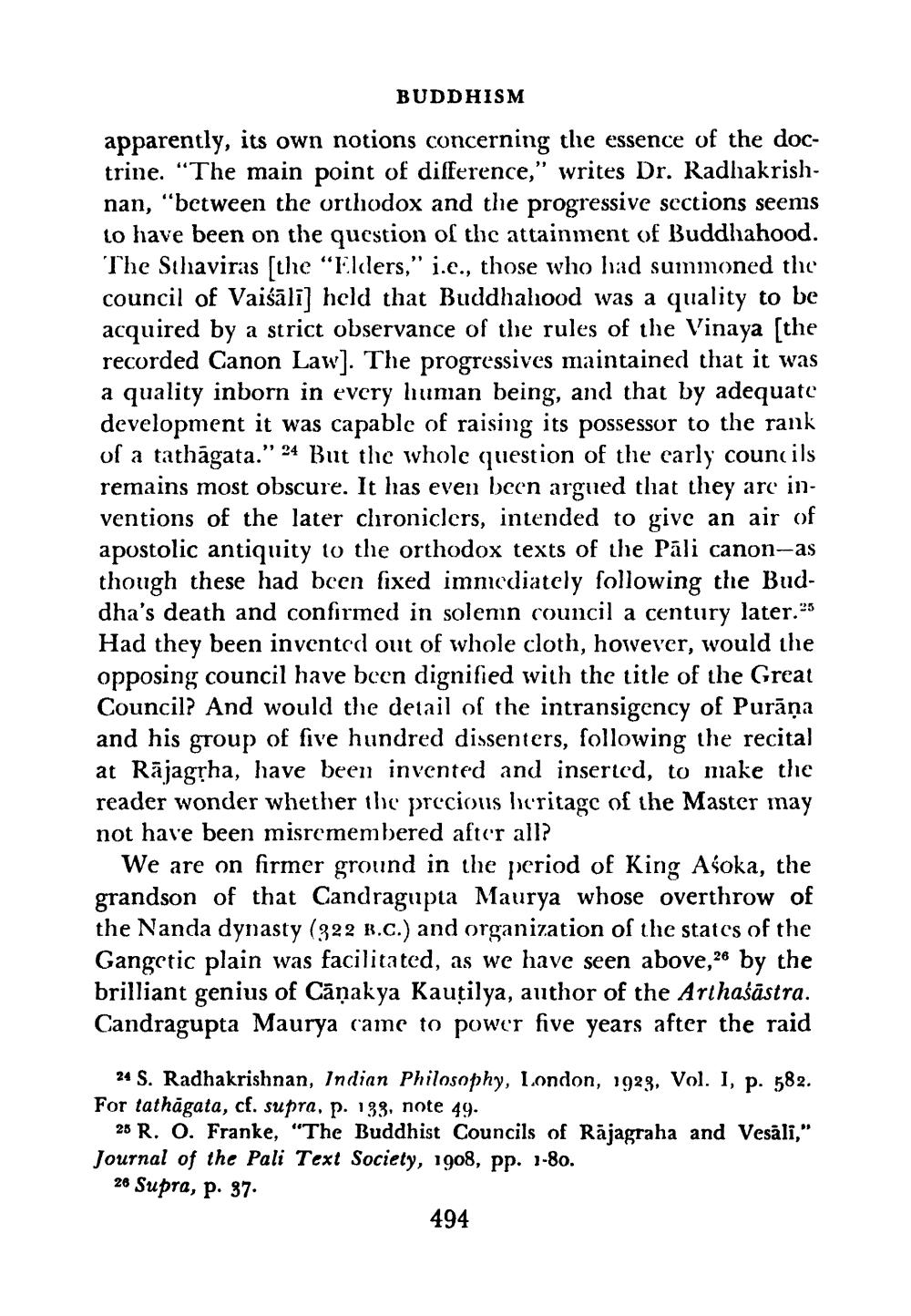________________
BUDDHISM
apparently, its own notions concerning the essence of the doctrine. "The main point of difference," writes Dr. Radhakrishnan, "between the orthodox and the progressive sections seems to have been on the question of the attainment of Buddhahood. The Sthaviras [the "Elders," i.e., those who had summoned the council of Vaiśālī] held that Buddhahood was a quality to be acquired by a strict observance of the rules of the Vinaya (the recorded Canon Law). The progressives maintained that it was a quality inborn in every human being, and that by adequate development it was capable of raising its possessor to the rank of a tathāgata." 24 But the whole question of the early councils remains most obscure. It has even been argued that they are inventions of the later chroniclers, intended to give an air of apostolic antiquity to the orthodox texts of the Pāli canon-as though these had been fixed immediately following the Buddha's death and confirmed in solemn council a century later.25 Had they been invented out of whole cloth, however, would the opposing council have been dignified with the title of the Great Council? And would the detail of the intransigency of Purāņa and his group of five hundred dissenters, following the recital at Rājagsha, have been invented and inserted, to make the reader wonder whether the precious heritage of the Master may not have been misremembered after all?
We are on firmer ground in the period of King Asoka, the grandson of that Candragupta Maurya whose overthrow of the Nanda dynasty (322 B.C.) and organization of the states of the Gangetic plain was facilitated, as we have seen above, 26 by the brilliant genius of Cāņakya Kautilya, author of the Arthašāstra. Candragupta Maurya came to power five years after the raid
24 S. Radhakrishnan, Indian Philosophy, London, 1923, Vol. I, p. 582. For tathāgata, cf. supra, p. 133, note 49.
26 R. O. Franke, "The Buddhist Councils of Rājagraha and Vesali," Journal of the Pali Text Society, 1908, pp. 1-80. 26 Supra, p. 37
494




